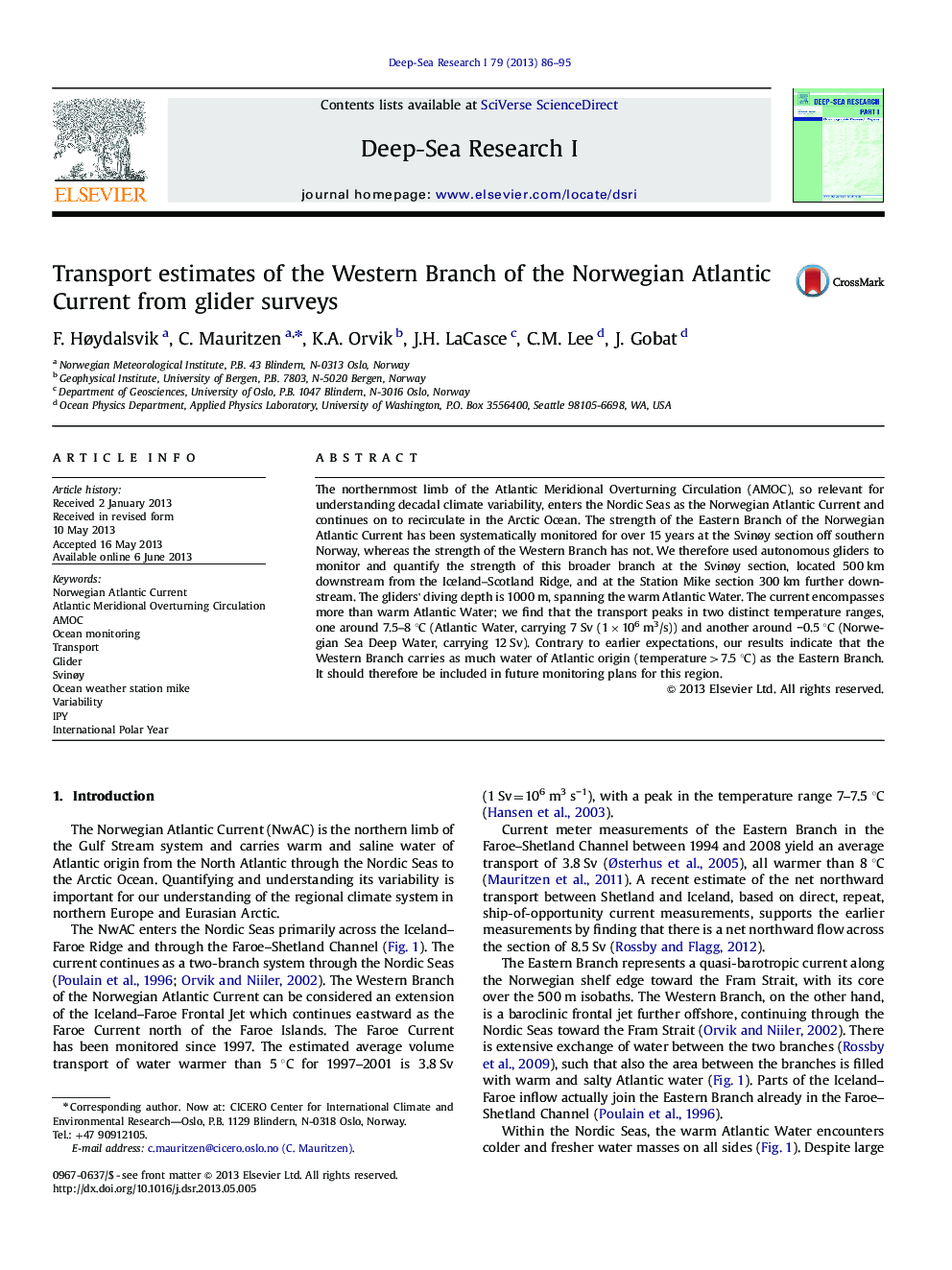| Article ID | Journal | Published Year | Pages | File Type |
|---|---|---|---|---|
| 6383751 | Deep Sea Research Part I: Oceanographic Research Papers | 2013 | 10 Pages |
Abstract
The northernmost limb of the Atlantic Meridional Overturning Circulation (AMOC), so relevant for understanding decadal climate variability, enters the Nordic Seas as the Norwegian Atlantic Current and continues on to recirculate in the Arctic Ocean. The strength of the Eastern Branch of the Norwegian Atlantic Current has been systematically monitored for over 15 years at the Svinøy section off southern Norway, whereas the strength of the Western Branch has not. We therefore used autonomous gliders to monitor and quantify the strength of this broader branch at the Svinøy section, located 500 km downstream from the Iceland-Scotland Ridge, and at the Station Mike section 300 km further downstream. The gliders' diving depth is 1000 m, spanning the warm Atlantic Water. The current encompasses more than warm Atlantic Water; we find that the transport peaks in two distinct temperature ranges, one around 7.5-8 °C (Atlantic Water, carrying 7 Sv (1Ã106 m3/s)) and another around â0.5 °C (Norwegian Sea Deep Water, carrying 12 Sv). Contrary to earlier expectations, our results indicate that the Western Branch carries as much water of Atlantic origin (temperature>7.5 °C) as the Eastern Branch. It should therefore be included in future monitoring plans for this region.
Keywords
Related Topics
Physical Sciences and Engineering
Earth and Planetary Sciences
Geology
Authors
F. Høydalsvik, C. Mauritzen, K.A. Orvik, J.H. LaCasce, C.M. Lee, J. Gobat,
